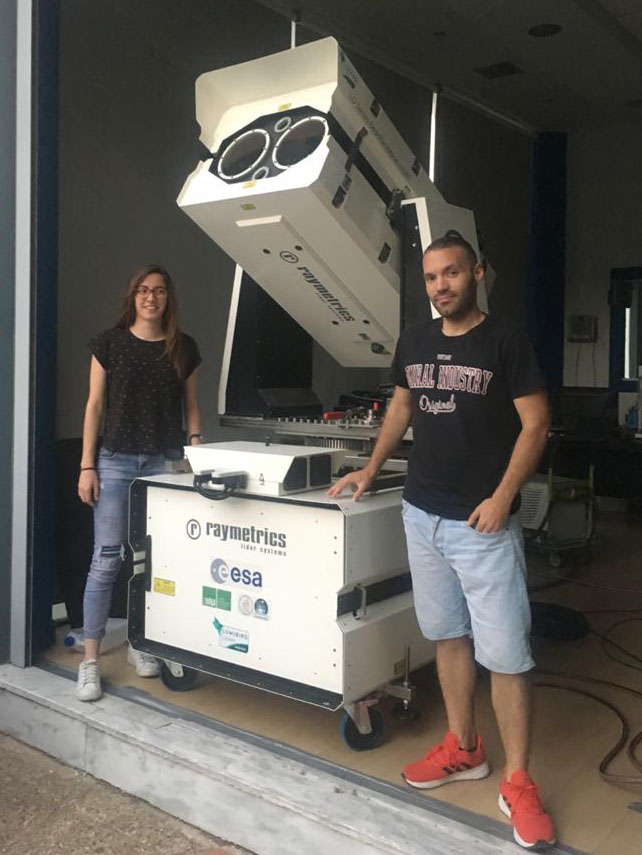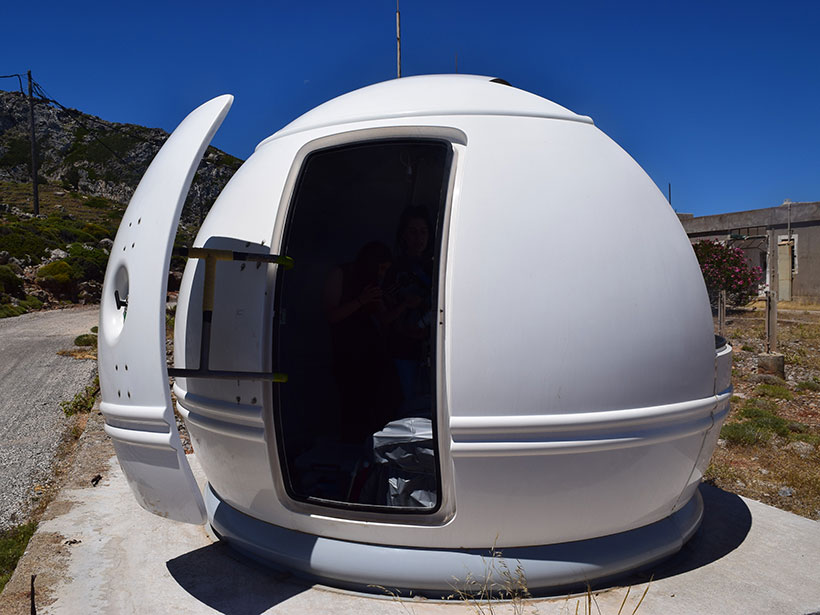The “Godzilla” Saharan dust plume that clouded over parts of the United States in June 2020 created a lot of talk and a lot of magnificent sunsets. Dust is an intriguing type of matter, vital for the formation of clouds and precipitation. We also know that if enough dust gathers in the atmosphere, it can block solar radiation. But what if some of these dust-related assumptions were slightly dusty—or completely wrong?
Members of the Remote Sensing of Aerosols, Clouds and Trace Gases (ReACT) team are trying to find out. The team, a group of atmospheric and climate scientists operating under the umbrella of the National Observatory of Athens (NOA), says the main reason for this “dust misconstruction” may be that we have failed to grasp the correct dust particle orientation in the first place.
“Dust particles might be vertically aligned,” said Vassilis Amiridis, a climate scientist and team leader of ReACT, as well as director of research at NOA. Amiridis is resuming what a research project in La Palma, Canary Islands, proposed in 2007. In that instance, researchers from the University of Hertfordshire in the United Kingdom and Macquarie University in Australia used optical polarimetry observations during a Saharan dust episode and found evidence indicating the presence of vertically aligned dust particles in the atmosphere.

Amiridis recently received a European Research Council consolidator grant to spearhead the development of the Panhellenic Geophysical Observatory of Antikythera (PANGEA). As part of the project, Antikythera, a tiny island situated between the Peloponnese and Crete, will be outfitted with avant-garde equipment to start unraveling the great dust particle alignment mystery.
“Our first measurements point to a vertical alignment of dust particles,” said Alexandra Tsekeri, an environmental engineer and member of the ReACT team. Tsekeri, along with scientists from Raymetrics (a Greek company specializing in systems used for atmospheric, meteorological, and air pollution applications) and Ludwig Maximilian University of Munich, has designed and constructed lidar systems to monitor particle orientation in the atmosphere.
“We will have definitive results in about a year from now, when our systems will be put to test in Cape Verde (in an experiment that would have taken place this summer had COVID not shut down everything),” said Tsekeri. Meanwhile, she and the rest of the team are putting the final touches on their lidar systems, which they call WALL-E and EVE after the robotic couple in the 2008 movie WALL-E.
The Devil in the Details
“Probably everything we’ve so far hypothesized about the impact of dust on the atmosphere might be misplaced.”
But what’s all the fuss about the orientation of dust particles?
“Probably everything we’ve so far hypothesized about the impact of dust on the atmosphere might be misplaced,” said Amiridis.
For a start, dust may be accelerating the greenhouse effect instead of cooling the planet. A vertical particle orientation may create a type of “Venetian blind” effect, allowing more radiation to sneak through the atmosphere—as much as 10%–20% more radiation in dust episodes like Godzilla, said Amiridis.
Additionally, whether dust particles are randomly or vertically aligned might be of paramount importance for satellite observations: “Remote sensing retrievals are affected by the assumption of particle shape and orientation,” said Amiridis. Some of the satellite observations we get over a given area during dust storms may not be entirely accurate.
“A vertical dust orientation is certainly a possibility,” said Stephen Holler, a physicist at Fordham University who is not a part of the ReACT project. He said there are many uncertainties in terms of the effect of aerosols on climate.
“We have had a clear big picture on climate change for years, but as they say, the devil is in the details.”
Holler explained that most of his colleagues do calculations on the basis of orientational averaging: “Because we don’t know the orientation of particles in space, we’ll just average over all orientations.” Most also think particles in the atmosphere behave much in the same way particles in liquids behave. “Much as particles in liquids tumble around and move all over the place, we expect particles in the atmosphere to tumble all over the place likewise.”
Holler is optimistic that the Greek scientists will help the scientific community better understand aerosol dynamics and its influence on radiative forcing. “The work of the ReACT team will reduce some of the uncertainties that are associated with the effects of airborne particles,” Holler said. “We have had a clear big picture on climate change for years, but as they say, the devil is in the details.”
—Stav Dimitropoulos, Science Writer
27 September 2020: This article has been updated to remove a reference to dust orientation and pathogen transport.
Citation:
Dimitropoulos, S. (2020), Have we got dust all wrong?, Eos, 101, https://doi.org/10.1029/2020EO149501. Published on 25 September 2020.
Text © 2020. The authors. CC BY-NC-ND 3.0
Except where otherwise noted, images are subject to copyright. Any reuse without express permission from the copyright owner is prohibited.

